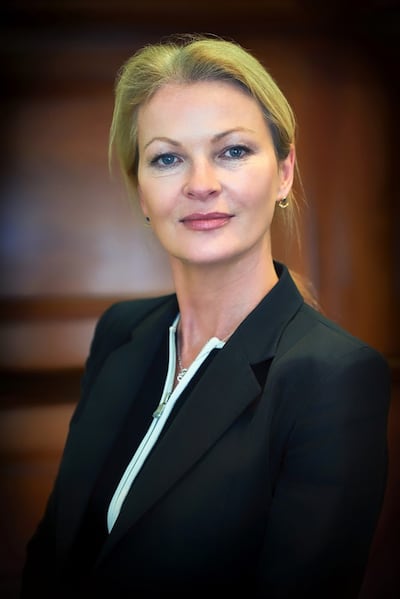Glasgow hosted the 26th UN Climate Change Conference of the Parties (Cop26) in November 2021, bringing “parties together to accelerate action toward the goals of the Paris Agreement and the UN Framework Convention on Climate Change”.
“It is one of – if not the most – widely recognised events influencing sustainability governance and policy along with the Destination 2050, Fit for 55 and Toulouse Declaration,” says Dr Marina Efthymiou, course director for MSc in aviation leadership, and assistant professor in aviation management at DCU’s Business School. “Cop26 is relevant for aviation as the environmental literacy of citizens is increased and airline passengers are now more informed than ever on environmental issues.”
Social criticism affects travel demand and passenger behaviour and, combined with the policy pressure, calls for aviation to mitigate its negative externalities, says Efthymiou. “In the last few years, aviation has taken huge steps in becoming more environmentally friendly. Recognising the severe impact of Covid-19, aviation remains committed to decarbonisation.”

Linda Barron, chief executive of the Irish Centre for Business Excellence and Aviation Skillnet director, says 23 nations signed the International Aviation Climate Ambition Declaration, an output of Cop26. “The Declaration recognises the need for aviation to ‘grow sustainably’ and reiterates the International Civil Aviation Organisation’s role to implement short-, medium- and long-term climate goals for the industry.”
Ensuring the maximum effectiveness of the Carbon Offsetting and Reduction Scheme for International Aviation, and the development and deployment of sustainable aviation fuels (SAF) are key aims of the declaration, she says.
With one of the Cop26 goals being achieving carbon neutral status by 2050, can the aviation industry – which accounts for about 2-3 per cent of worldwide carbon emissions – meet the target?

“The answer is it can, but they’ll have to be creative and think of sustainable ways of changing,” says John Cotter, professor in finance and chairman of quantitative finance at University College Dublin. While moving to cleaner fuels and better technology will be part of the solution, they won’t be the full solution, he says. “It’s going to be a combination of approaches. A big player in all of this is going to government support and policies from government.”
The outputs of Cop26 are not a surprise to the sector, says Cotter. “The sector is responding – it didn’t come as a shock.” The main trade organisation, International Air Transport Association (IATA), has recognised it as the number one challenge for the industry. “They see a very important role for government to incentivise improvements that reach the target and penalise situations where this would be disimproved.”
Carbon challenges
The aviation sector acknowledges the need to reduce its carbon footprint but the sector does have challenges in this area, primarily due to being a highly regulated industry, which also makes it a conservative sector, says Barron. “The changes required across aircraft manufacturers, airlines, airports and the extended supply chain is enormous but there is great work being done and stakeholders are committed to meet the challenges.”
Steps are being taken already to meet the goal and make aviation more sustainable in the run-up to 2050. “In December 2021 United Airlines flew the first passenger flight operating one engine on 100 per cent SAF with the other running on conventional jet fuel to prove there are no operational differences between the two,” says Barron.
“The flight from Chicago’s O’Hare International Airport to Washington DC’s Ronald Reagan National Airport demonstrated that SAF is a scalable solution to help decarbonise the aviation industry. The airline also announced new corporate participants joining the Eco-Skies Alliance, an effort to collectively purchase 7.1 million gallons of SAF this year including Microsoft, Salesforce and Visa.”
Other airlines exploring SAF are Emirates and GE Aviation, which have committed to test flights using 100 per cent sustainable aviation fuel by the end of 2022.
Efthymiou explains how SAF can help reach the target. “SAF, for example, can contribute to achieving carbon neutrality by 2050 by 41 per cent and Market-Based Measures by 32 per cent. A proactive approach to fleet renewal is also key to decarbonisation along with evolutionary and revolutionary aircraft.”
Connected solution
It’s not only the airlines that have to work to reach this goal, says Cotter. “A big part of reaching the target will be the companies who connect the planes to the passengers, such as aviation leasing companies, and those that build the aircraft themselves. He believes that those organisations should be incentivised to look for a solution. “Leasing companies are highly resilient and proactive in this space but they need support.”
Cotter references the resilience of the industry when it was grounded in March 2020 and – for the most part – survived. “In a situation where their business had closed, they survived. It’s a big challenge, but one that can be successfully met.”
Efthymiou agrees that there are many ways the industry can respond to reach the goal.
“The main ways in which the aviation industry responds to these challenges are evolutionary improvement in aircraft technology, deployment of electric and hydrogen-powered aircraft, operational improvement and airspace architecture innovations, use of Sustainable Aviation Fuels via the ReFuelEU initiative and Market-Based Measures like Emissions Trading Scheme and Carbon Offsetting and Reduction Scheme for International Aviation.”
In addition, Barron says that more direct routes for airlines would also make an immediate impact and an estimated reduction of current fuel consumption by between 10 and 20 per cent.
















